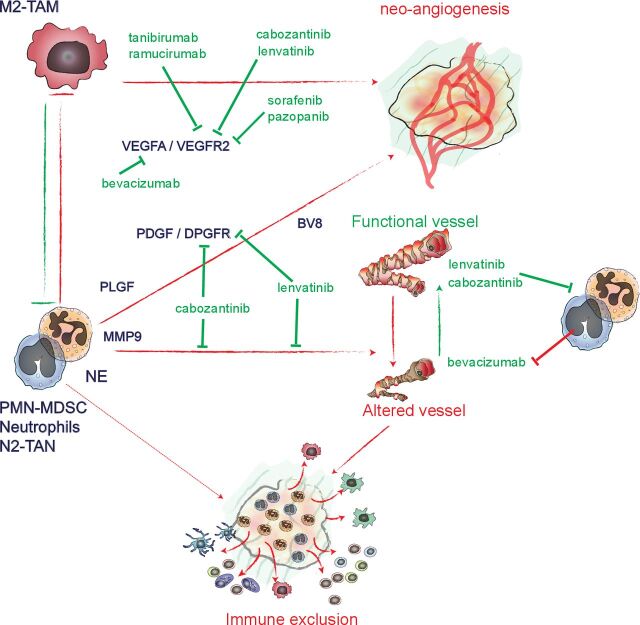Figure 2.
TAN, tumor angiogenesis, and therapeutics used in combination with ICIs TANs and macrophages play a key role in tumor neoangiogenesis. Tumors are highly infiltrated by macrophages or neutrophils, frequently in a mutually exclusive manner. However, in mouse models, these two cell types can substitute each other during neo-angiogenesis. Neutrophils secrete PlGF, PDGF, VEGFA, and Bv8 that directly contribute to neoangiogenesis. These cells also express MMP9 that plays an important role in neoangiogenesis. Neutrophil infiltration drives bevacizumab resistance, while the impact of this cell type on the response to anti-VEGFR2 antibodies (tanibirumab and ramucirumab) and small molecule inhibitors (sorafenib and pazopanib) remains to be characterized. Cabozantinib and lenvatinib, which block VEGFR1–3 and PDGFR and other tyrosine kinase receptors, inhibit neutrophil tumor-promoting function and neoangiogenesis. TANs promote the formation of an immature blood vessel network that lack pericyte coverage and that is not permissive to immune cell extravasation and recruitment in tumors. Ultimately, this contributes to immune exclusion. All the indicated drugs are currently tested in combination with ICIs. ICIs, immune checkpoint inhibitors; MMP9, matrix-metalloproteinase-9; PDGFR, platelet-derived growth factor receptor; PIGF, placental growth factor; TANs, tumor-associated neutrophils; VEGFA, vascular endothelial growth factor-alpha; VEGFR, VEGF receptor.

